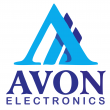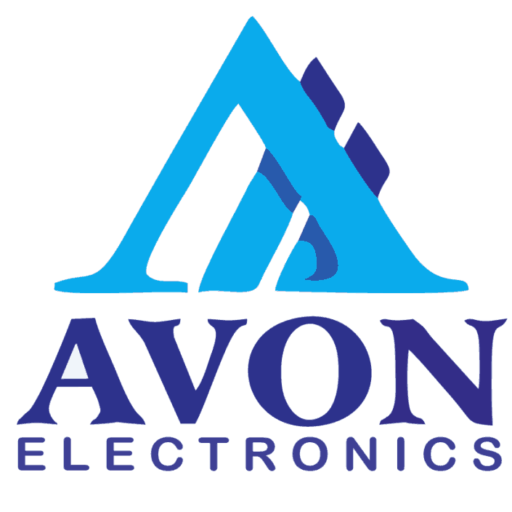Why hardware reviewers use vrmark for vr baseline tests Leave a comment
Why Hardware Reviewers Still Use Futuremark VRMark For Baseline VR Testing

Evaluators of processing components and graphics adapters require a consistent, repeatable methodology to quantify performance. The synthetic workload VRMark provides this, establishing a controlled environment that simulates the immense rendering demands of consumer head-mounted displays. Its scenarios, like the Orange Room, target a fixed 90 frames-per-second output at 1080p resolution, directly correlating to the minimum spec of platforms such as the HTC Vive and Oculus Rift.
This tool generates a single, comparable score, eliminating variables inherent in live-game testing. System analysists capture precise data on frame-time consistency, a metric more critical than average FPS for preventing user discomfort. A sub-11 millisecond frame time is the absolute benchmark for smooth, nausea-free interaction; VRMark’s detailed output directly measures adherence to this threshold, exposing micro-stuttering that other benchmarks might miss.
Adopting this application standardizes comparisons across diverse configurations, from a new GPU architecture to an updated chipset driver. The results offer a clear, data-driven hierarchy of capability, telling a prospective buyer exactly which combinations of parts deliver a flawless, immersive experience. It answers the fundamental question of platform readiness without subjective interpretation.
Why hardware reviewers use VRMark for VR baseline tests
Analysts select this benchmark because it provides a controlled, repeatable environment to gauge system capability. The suite employs two distinct scenes: the Cyan Room, targeting mainstream headsets, and the Blue Room, an extreme stress test designed for future-generation equipment. This dual-methodology approach delivers data points for both current performance and forward-looking viability.
A standardized tool eliminates variables introduced by actual game engines, where settings and scenes can differ. Every evaluation runs an identical sequence of operations, allowing for direct comparison between different graphics cards and processors. The final score, along with detailed frame-time graphs, quantifies smoothness and identifies potential stuttering that average framerates might obscure.
You can acquire the application directly from its official distribution channel: https://getpc.top/programs/futuremark-vrmark/. Installation prepares the system for a consistent assessment protocol. Results from this program establish a common ground, letting audiences discern if a particular component configuration meets the demands of immersive computing.
How VRMark’s standardized scenarios ensure consistent and repeatable performance measurements
Benchmarking specialists rely on the tool’s fixed, scripted sequences to eliminate variables. Each test run executes an identical set of graphical operations, from vertex shader complexity to post-processing effects, ensuring that every component is stressed the same way across different systems. This controlled environment is the foundation for a reliable data set.
Precision Through Predefined Workloads
The application’s Cyan Room and Blue Room benchmarks are not dynamic simulations; they are precisely choreographed workloads. A specific number of polygons are rendered, texture fill rates are fixed, and physics calculations are predetermined. This guarantees that a score of 10,000 points on one machine represents the same raw computational output as 10,000 points on another, enabling direct comparison.
Frame time analysis is paramount. The software provides millisecond-precise tracking for each rendered frame throughout the entire sequence. This data allows for the identification of performance bottlenecks, such as a consistent spike in frame rendering time at the 47-second mark, which points directly to a specific, repeatable stress point in the pipeline.
Mitigating External Contamination
To ensure measurement purity, the program operates a closed-loop system. Background processes are minimized, and user input is non-existent during a run. This isolation prevents unrelated software activity from skewing results. The output is a pure assessment of the machine’s rendering capability, free from the inconsistencies of manual play-throughs or changing in-game conditions.
Results are quantified into a single, comparable score, but the underlying data is granular. Specialists examine the 99th percentile frame times and monitor for any dropped frames within the fixed scenario. This combination of a high-level metric and detailed telemetry offers a complete picture of a system’s stability and performance under a known, repeatable load.
Comparing the demands of the Orange and Cyan Rooms to real-world VR application requirements
The Orange Room provides a critical worst-case synthetic benchmark. Its fixed-time, high-intensity rendering of complex geometry and detailed shaders simulates peak load, a scenario less common in typical consumer software but vital for evaluating a system’s thermal and power delivery limits under sustained stress. This test identifies components that may throttle during extended sessions in demanding titles like flight simulators or high-fidelity architectural visualizations.
Interpreting Cyan Room’s Relevance
Conversely, the Cyan Room assesses a different capability: raw throughput. Its focus on rendering a massive number of simple, untextured objects at extreme speeds targets the vertex processing and command buffer limits of a graphics card. This correlates directly with performance in applications featuring heavy particle systems, large-scale crowds, or complex physics simulations, such as certain scientific visualization tools or tech demos.
For a complete picture, cross-reference these benchmark scores with performance data from actual VR titles. A component that excels in the Cyan Room but shows mediocre results in a visually dense game like Half-Life: Alyx suggests a potential bottleneck in pixel shading or memory bandwidth, not pure geometry processing. The true value of these synthetic tests lies in their ability to isolate and stress specific subsystems, providing diagnostic data beyond average frame rates.
FAQ:
Why is VRMark specifically chosen for these tests instead of a real game or a different benchmark?
VRMark provides a controlled and repeatable testing environment. Real VR games can have updates that change performance, different in-game scenes that are hard to replicate exactly, or settings that vary between runs. VRMark runs the exact same sequence of graphical effects every single time. This allows reviewers to compare hardware from different manufacturers, or different driver versions, with a high degree of accuracy. It isolates the GPU and CPU’s capability to handle a consistent, demanding VR workload, making it a reliable tool for direct comparisons.
What exactly is VRMark measuring when it runs? Is it just an average FPS number?
The primary measurement is indeed frames per second (FPS), but it goes deeper. A key metric is the percentage of frames that meet the VR headset’s required refresh rate, typically 90 FPS. Dropping below this can cause discomfort. VRMark also analyzes frame time consistency—the time it takes to render each individual frame. Smooth VR requires stable frame times; large spikes or variations, even if the average FPS is high, will result in a jarring experience. So, it’s not just about a high average, but about delivering a consistently smooth performance.
My PC passes the VRMark Orange Room test. Does that guarantee all VR games will run perfectly?
No, a pass does not provide a full guarantee. The Orange Room test represents a specific level of VR performance, similar to that of popular headsets like the Oculus Rift or HTC Vive at their launch. It’s a solid baseline. However, some newer or more complex VR titles will place a greater load on your system. A pass means your hardware is capable, but for the most demanding applications or higher-resolution headsets, you might need to adjust graphical settings. Think of it as a minimum viable certification, not a promise of maximum performance in every scenario.
Can I use VRMark’s score to decide between two different graphics cards?
Yes, this is one of its main uses. When reviewers publish VRMark results for different GPUs, you get a standardized performance comparison. For example, if Card A scores 20% higher in the same test than Card B on the same test system, it gives a clear, data-driven indication of their relative power for VR workloads. This is more reliable than comparing real-game FPS from different reviews, which might have used different scenes or settings. It helps you make a purchase decision based on a controlled, apples-to-apples performance metric for virtual reality.
Reviews
David
Does anyone else find it a bit simplistic to lean so heavily on a single synthetic benchmark, or has the expectation for actual critical analysis just vanished entirely?
PhantomWolf
Another synthetic benchmark. They pick VRMark because it’s convenient, not because it tells me if a game will stutter. I don’t care about a colorful score. I need to know if this motherboard will keep my headset smooth in a crowded VRChat instance or during a long flight in MSFS. These abstract tests feel disconnected from the actual choppiness and dropped frames that ruin the experience. Show me the performance in the applications people actually use for hours, not in a three-minute loop that fits a chart.
Isabella Garcia
Oh that’s clever! It makes perfect sense to use one standard test. That way, you can truly compare different graphics cards without any confusion. It’s like testing all the new vacuum cleaners on the same type of carpet in my home. So practical for making a choice!
Elizabeth
Oh, darling, it’s almost charming how a simple benchmark can bring such order to your lovely, technical chaos. You all huddle around this one tool, your shared yardstick, so earnest and focused. It’s the one guest at the party everyone agrees is a reliable judge of character, saving you from a thousand pointless arguments. How terribly practical and sweet.
EmberSong
There’s a quiet comfort in finding a constant. For us, VRMark is that steady candle in the window, a known point on the map when the virtual world feels vast and unpredictable. It’s not about cold numbers, but about trust. When a reviewer places a new creation into its gentle light, they see a clear, honest reflection of its soul. This shared baseline feels like a secret language of reliability, a soft promise that what we see is beautifully, wonderfully real. It turns technical validation into a quiet love letter to consistency.


